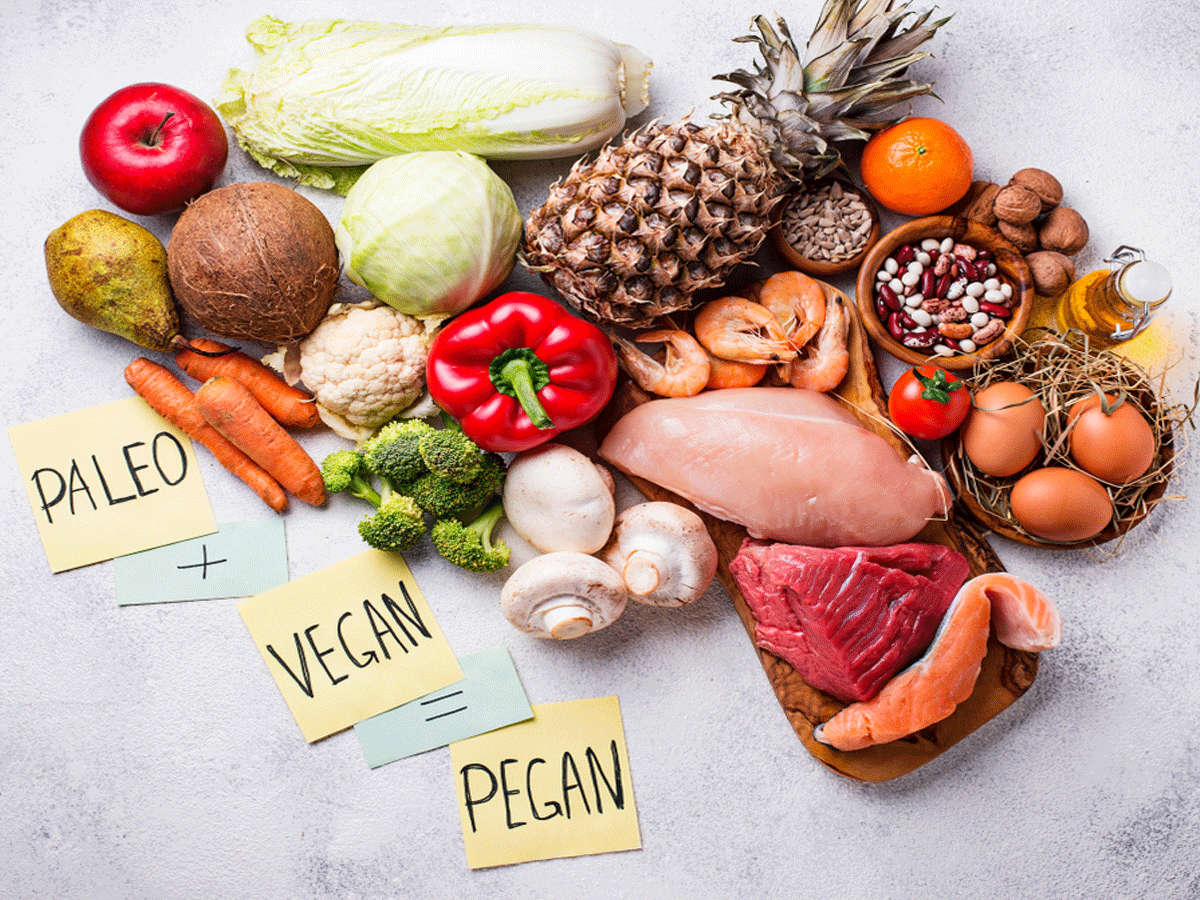What is the Pegan Diet, and what would you be able to eat on the pegan diet?
Since there aren’t sufficient eating diet fads, there’s another eating plan that guarantees to enable you to look and feel your best. Made by Dr. Imprint Hyman in 2014, the pegan diet is a mix of paleo and vegetarian, and has as of late turned out to be in vogue. On his blog, Hyman claims it’s the most ideal approach to feel better, lose weight, and stay healthy.
Be that as it may, how would you merge these two opposing strategies? Also, is it really the most beneficial approach to eat– as Hyman claims? This is what you should know:
What is the pegan diet?
The eating plan incorporates principles from paleo and veggie . In case you’re new, paleo accentuates eating meats, natural products, and vegetables, and limits grains, vegetables, dairy, potatoes, refined vegetable oils, and alcohol.
Vegans restrict food from animals, which incorporates clueless things like gelatin, omega-3 fortified foods, and honey.
Superficially, the two appear to be truly changed, yet they do share one thing in common: fresh fruits and vegetables.
“It’s just taking the things that are good from the paleo diet and taking the things that are good from the vegan diet and putting them together,” Wesley McWhorter, R.D. and chef at UTHealth School of Public Health, tells Men’s Health.
What can you eat on the pegan diet?
The greater part of your dinners will comprise fruits and vegetables since Hyman prescribes making plants 75 percent of your plate. Meat ought to be treated as a side dish rather than the fundamental course. Here’s a full list on what you can eat:
Healthy fats (think omega-3 fatty acids, nuts, coconut, and avocados).
Fruit and vegetables
Nuts and seeds
luten-free whole grains
Lentils for those who can’t give up legumes
Grass fed, sustainably raised animals (fish, beef, pork and chicken are OK in moderation)
Sugar is an occasional treat
Foods to avoid on the pegan diet
Hyman advises keeping these foods to a minimum:
Dairy, including milk, yogurt, and cheese. Organic goat and sheep’s milk products are OK in moderation
Grains, including entire wheat. Without gluten entire grains ought to be maintained a strategic distance from in light of the fact that they “raise Grains, including whole wheat.
Gluten-free whole grains should be avoided because they “raise blood sugar and can trigger autoimmunity,” according to Hyman Legumes, but lentils get a reprieve
Sugar: very minimal Vegetable oils such as canola, sunflower, corn, and soybean oil,Chemicals, additives, preservatives, dyes, MSG, and artificial sweeteners
Is the pegan diet healthy?
Hyman trusts this is the best arrangement for a great many people, although he says it will vary depending on health conditions and preferences.
“This way of eating makes the most sense for our health and the health of our planet. It is sustainable and kinder to animals,” he writes on his blog.
But what do outside experts think?
“When you exclude entire food groups that bothers me,” says McWhorter. “You can’t pinpoint one thing and say that’s the sole of all evils. That’s kind of what he’s saying there.”
Be that as it may, McWhorter concurs with Hyman on one point: a large portion of us have to eat more products of the soil.
Rather than dispensing with whole nutritional categories, McWhorter proposes making vegetables at any rate half of your plate. Fill the rest in with meat and grains, or other foods of your choosing.
“Even if you don’t wan to cut down the size of your burger or steak, include the veggies,” he says.

